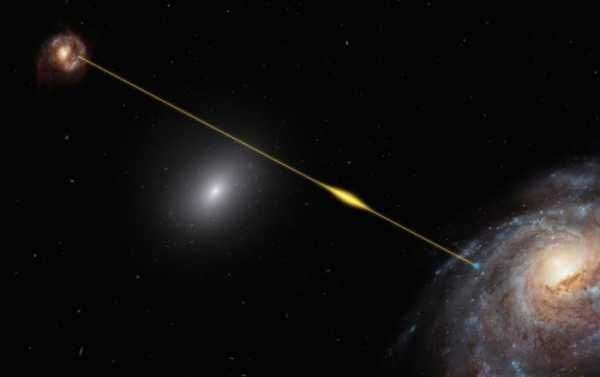
A team of astronomers associated with the Canadian Hydrogen Intensity Mapping Experiment (CHIME) collaboration recently revealed their discovery of mysterious fast radio bursts (FRB) from a source in a distant galaxy that repeats its signals every 16 days.
Published Wednesday in the journal Nature, the study detailed the analysis of signals coming from FRB 180916.J0158+65, which researchers say is an unknown source located in a galaxy some 500 million light-years from Earth.
With more than 500 days of observations, the group of researchers only detected the FRB pattern after having examined a total of 38 bursts.
Kiyoshi Masui, a member of the CHIME collaboration project and assistant professor of physics at the Massachusetts Institute of Technology’s (MIT) Kavli Institute for Astrophysics and Space Research, said in a statement to MIT that the FRB pattern functions “like clockwork.”
“It’s the most definitive pattern we’ve seen from one of these sources,” he said. “And it’s a big clue that we can use to start hunting down the physics of what’s causing these bright flashes, which nobody really understands.”
FRBs, which are groups of intense pulses of radio waves, were first detected in 2007 and have remained mostly a mystery to scientists trying to pinpoint their origins. Presently, researchers have speculated that they are the result of stellar flares or the product of colliding neutron stars.
The mystery behind FRBs piqued the science world’s curiosity even further in 2016 when astronomers detected the very first repeating bursts that they eventually traced back to a dwarf galaxy situated some 3 billion light-years from Earth.
Prior to the 2016 discovery, scientists had detected more FRBs, however, they were typically one-off signals.
Dongzi Li, a study co-author, told Space.com in a statement regarding the new findings that the “periodicity on the time scale of weeks was only rarely predicted in previously proposed theories.”
Although the origins of the signals still remain unknown, researchers have speculated that the bursts could be in fact coming from a sole neutron star, or from one neutron star orbiting either another neutron star or black hole. A third scenario the team came up with involved a radio-emitting source that circles another star.
Sourse: sputniknews.com






